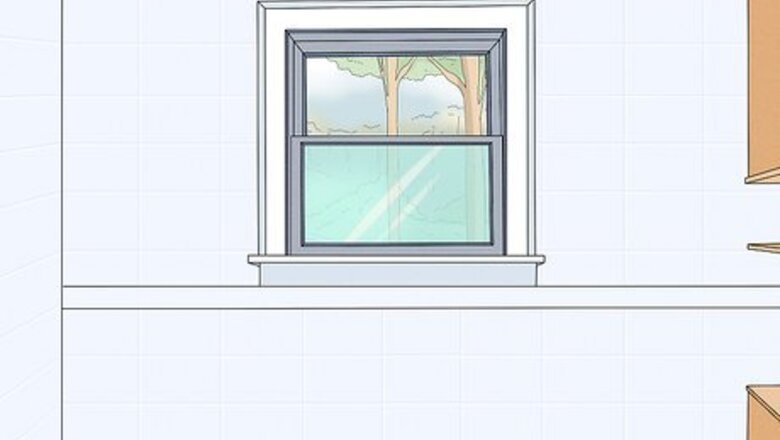
views
Stains and Deposits
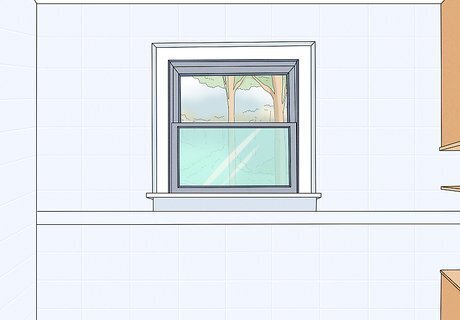
Open your bathroom window to let fresh air in. Toilet bowl restoring chemicals are usually pretty strong, so you don’t want to be breathing those in. Open your bathroom window before getting started so the room is ventilated, and leave it open until you’re done. Turn on the fan in your bathroom as well to help keep air circulating. If you don’t have a window in your bathroom, take extra care not to breathe the fumes in directly. Leave the room as soon as you pour the chemicals out and spend as little time in there as possible.
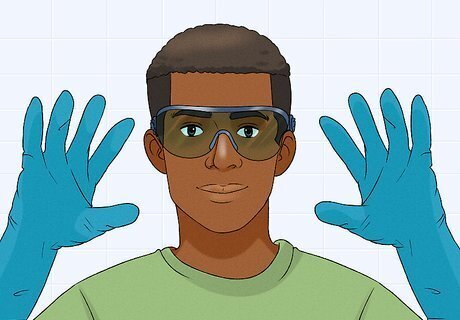
Put on rubber gloves and goggles for protection. These chemicals are acidic and can burn or irritate your skin if you touch them. Put on a thick pair of rubber cleaning gloves and goggles to protect yourself while you’re handling the restoring chemicals. There may be some other safety steps for the particular product that you use, so always make sure to read the instructions first. If you do get any chemicals on your skin, wash the area immediately with soap and water. If you get any in your eye, rinse it with lukewarm, running water for 20 minutes. Get medical attention if your skin or eye is irritated.
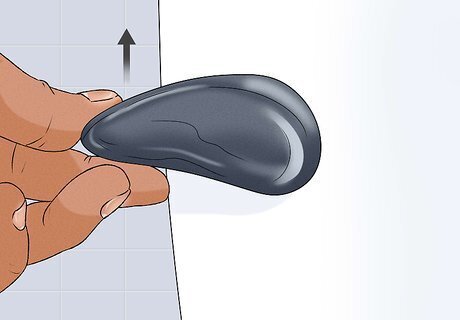
Empty the water from your toilet bowl. This is the best way to make sure the cleaning chemicals dissolve all the stains. Reach behind your toilet and turn the knob clockwise to shut the water off. Then flush the toilet to drain the water. If there is any water left in the bowl, soak it up with a dry towel or vacuum it up with a shop vac. If you’re not cleaning stains under the water line, then you don’t have to drain the bowl.
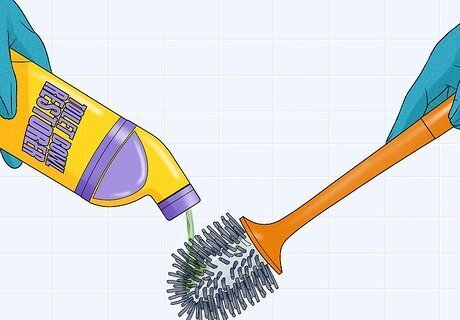
Wet a soft toilet brush with the restorer liquid. Hold the toilet brush over the bowl and pour the restorer over it. Get the brush good and soaked with the chemical. Pour slowly and be very careful not to spill any restorer out of the bowl. It could stain furniture and rugs. Don’t breathe in while you’re pouring the restorer so you don’t inhale the fumes directly.
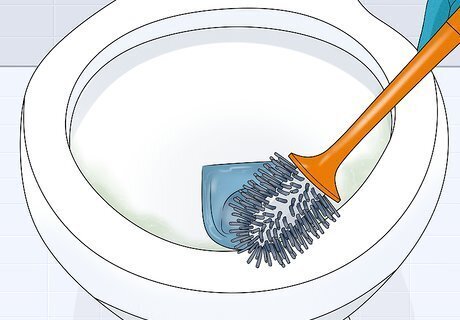
Rub the entire inside of the bowl with the brush. Scrub the bowl like when you clean it normally. Make sure the restorer is distributed all throughout the inside of the bowl. Rub gently so none of the restorer splashes out.
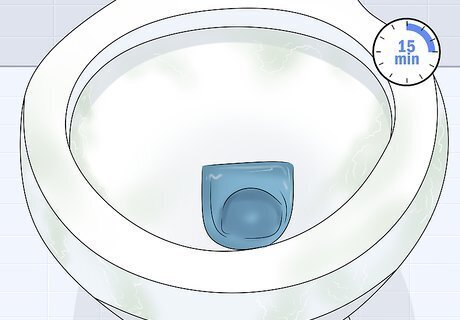
Let the solution sit for 10-15 minutes. The restorer needs some time to break down stains, especially tougher ones. Wait 10-15 minutes for the restorer to dissolve and lift any stains inside the bowl. It’s best to leave the bathroom while you wait so you don’t inhale any of the fumes. If the product you use recommends a different amount of time, follow those instructions instead.
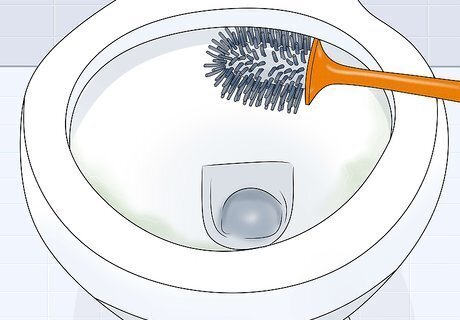
Scrub underneath the rim of the bowl to clear the flush holes. Over time, minerals build up around the bowl’s flush holes and make the flush action weaker. Most restorers work on this as well. Scrub underneath the rim of the bowl to get the solution up into the flush holes. Scrub the rest of the toilet bowl as well. You can even use a pumice stone to remove hard water spots, calcium deposits, or other difficult stains.

Flush the toilet to wash the stains away. Reach behind the toilet and turn the knob counterclockwise to turn the water back on. Then flush the toilet to rinse away the restorer and the stains. You might have to flush a few times to get rid of everything.
Scratches
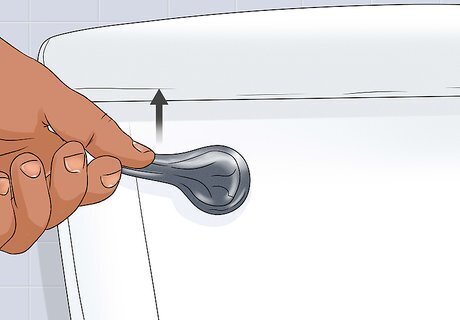
Drain the water from the toilet bowl. If you have to reach scratches beneath the water surface, you won’t be able to reach them with the toilet full. Reach behind the toilet and turn the knob clockwise to turn off the water supply. Then flush the toilet to drain the bowl. If there is any water left in the bowl, soak it up with a dry towel or vacuum it up with a shop vac. If you’re fixing scratches above the water line, then you don’t have to drain the water.
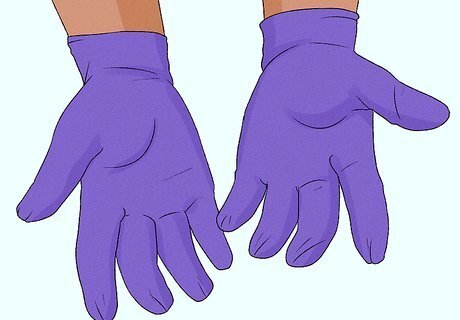
Put on a pair of gloves to protect your hands. Cleaning chemicals can be strong and they might cause irritation or burns on your skin. Protect your hands with a thick pair of rubber cleaning gloves whenever you use them. If you do get any chemicals on your skin, wash the area right away with soap and water.
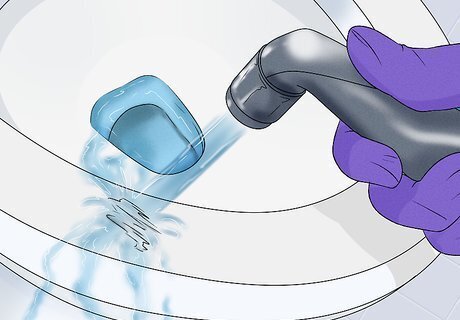
Wet the scratched spot. Most spot cleaners work best on wet surfaces. If the spot isn’t already wet, pour some water onto it to wet it. Different products might have slightly different instructions, so follow the instructions provided.
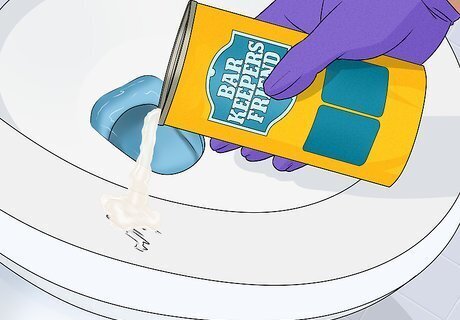
Sprinkle some acidic cleaning agent onto the scratch. Get a bathroom cleaner designed for dissolving mineral deposits and set-in stains. These cleaning products usually come in powder form. Sprinkle some onto all the scratched spots. The most popular scratch remover is Bar Keepers Friend. Some users also say that cleaners like Comet work as well. Liquid cleaners like CLR can also work if you scrub them into the scratch. Cleaning a scratch might seem weird, but scratches show up because of gunk and mineral deposits in the crevice. Cleaning this out actually makes the scratch disappear.

Scrub the area with a damp rag. Once the cleaning chemicals soak into the scratch, it’s just a matter of scrubbing the stains out. Wet a rag and rub the spot firmly until the scratch disappears. Start off with light pressure and gradually press harder to work the stain out. Remember to keep your gloves on so you don’t get any chemicals on your skin.
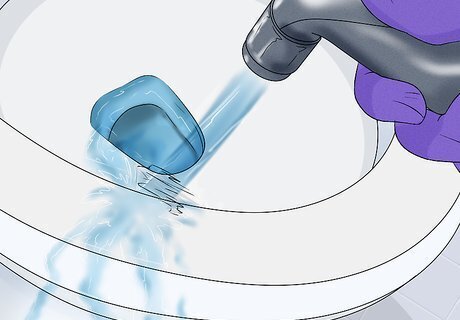
Rinse the area to get rid of the cleaning solution. Pour some water over the spot to rinse away the cleaning solution and any leftover gunk. If the scratch is gone, reconnect the water for the toilet and flush it to refill the bowl. It might take more than one treatment to get rid of very stubborn scratches. If the scratch still won’t go away after multiple treatments, it might actually be a crack. Contact a plumber to come look at your toilet and advise you on any repairs you might need.


















Comments
0 comment